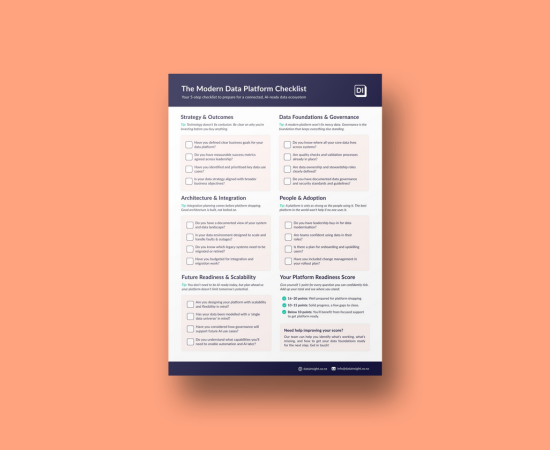Case Study
July 30, 2021
Transforming Branch Performance with Data
The Client
We partnered with a top-tier real estate company renowned for selling a diverse range of properties, from intimate homes to thriving businesses.
Their goal was to tackle the trust issues surrounding data across the organisation. They wanted to create a culture where everyone could use data to make smarter decisions and boost overall performance.
.jpg)
The Challenge
Our client's head office aimed to integrate data-driven practices across the organisation in order to make accurate comparisons between branches and share successful strategies.
The challenge was that each branch had its own way of handling data, leading to inconsistency and a lack of trust in the information shared across the organisation.
This disjointed approach made it difficult for the head office to apply successful strategies uniformly across branches or to evaluate the impact of important decisions.
Overcoming these barriers of mistrust and inconsistency was essential for our client to truly harness the power of data and achieve its sales enhancement goals.
Our Approach
- Collaborative Goal Setting: We kicked off by jointly identifying a key goal that would benefit both the head office and branches. This process led to the development of a performance dashboard concept, aimed at giving insights on regional and branch performance, fostering healthy competition, and highlighting effective strategies.
- Global Metric Definition Workshop: In collaboration with branch area managers, we defined universal metrics for the organisation. This cooperative effort ensured that the metrics were agreed upon across the board, setting the stage for their integration into the dashboard.
- Data Universe Construction and Audit: We undertook comprehensive data audits and quality checks to build a robust data universe. This involved adhering to the newly established metric definitions and addressing any data discrepancies between the head office and branches.
- Specialised Dashboard Creation: Leveraging the data universe, we crafted a series of purpose-driven dashboards. Each dashboard was designed with a unique audience and objective in mind, tailored to meet diverse informational needs.
- National Progress Presentation and Trust Building: At the client's national conference, we presented our progress, acting as an unbiased third party. This step was instrumental in breaking down trust barriers and fostering acceptance of the new system across branches.
- Direct Branch Engagement and Support: By participating in quarterly area meetings, we addressed branch-specific queries about the data and dashboards. This direct engagement not only built trust but also identified and resolved any lingering data issues.
- Implementation and Adoption Across Branches: Our efforts culminated in the widespread adoption of the dashboard across almost every branch in New Zealand, cementing it as the definitive source for insights and reports within the company.
- Internal Data Team Development: Following the successful dashboard implementation, the company expanded its data capabilities, forming an internal team comprising a head of analytics, data analyst, and reporting analyst. This team is focused on further enhancing the data foundation we established.
The Outcome
Through creating a clear, tangible goal for the team to work towards, we fostered a collaborative environment where both the head office and branches actively participated in defining and understanding their data. This unified approach not only clarified the purpose and usage of the data but also promoted a sense of shared ownership.
Upon delivery all teams were able to see the value and benefit from having greater access to the insights that matter to them – which meant trust in the numbers was able to be achieved.
This transformation built trust in the data and the result was improved performance and growth opportunities for our client.
Key Client Benefits

Data-Driven Decision Making
With a focus on accurate insights from the dashboard, decisions were based on reliable data.

Improved Collaboration
Trust issues between the head office and branches were fixed, fostering better cooperation now and for future projects.

Enhanced Accountability
By applying the same metrics across the board, their head office fostered a sense of fairness and responsibility, holding every individual and branch to the same agreed-upon standards.

Agile Impact Assessment
The shift to a data-centric strategy enabled the leadership team to quickly gauge the effectiveness of their decisions and nimbly adapt to market fluctuations.






.png)